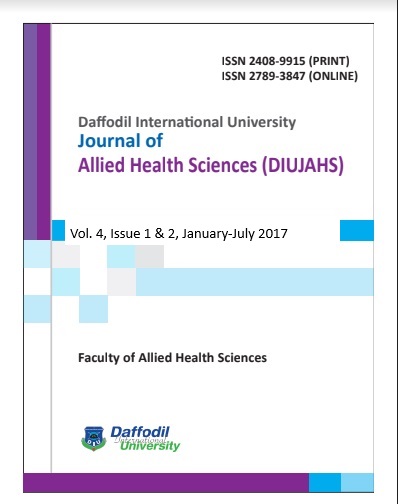Nutrient intake of patients with non-alcoholic fatty liver disease in Dhaka city, Bangladesh
DOI:
https://doi.org/10.36481/diuhls.v04i1-2.p58jvj54Keywords:
NAFLD, NASH, Diabetes, BMI, DIET FIBROSISAbstract
Dietary behaviors are fundamental in the progress of almost all diseases including hepatic lipid accretion, known as “nonalcoholic fatty liver disease (NAFLD)”. Be that as it may, there are restricted examinations in regards to the dietary propensities for patients with perpetual liver illness. This pilot study was carried out to evaluate feasibility of a large-scale project in terms of data collection and research process. A cross-sectional examination was directed on 20 NAFLD patients going to the outpatient division of Bangladesh Institute of Health science (BIHS). All patients underwent abdominal ultrasound, biochemical tests, dietary evaluations, and anthropometric evaluations. Their food intake was measured by a food-frequency questionnaire and 24-hour food recall.The mean age of the patients was 53±1.8 years, 50% of the individuals were men, most participants were overweight and 30% had NAFLD with fibrosis. There was no significant difference in nutrient intake and fat related diet behavior between patients with and without fibrosis. Yet fat related diet was found to be significantly associated with high LDL cholesterol levels and age. Due to small sample size, no significant impact of diet pattern was observed on the severity of NAFLD patient among included subjects. Future studies need to be carried out with a larger sample size and among subjects not exposed to diet intervention.

